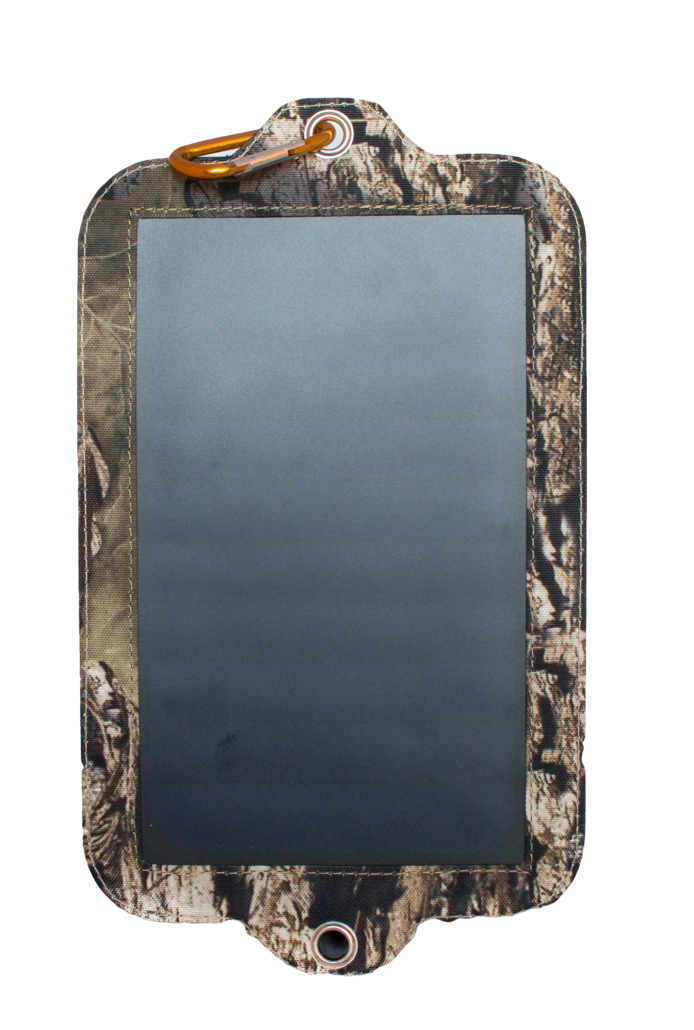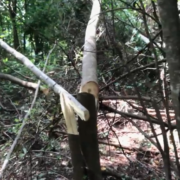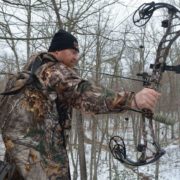Up Your Trail Camera Game for the Rut
Game Camera Strategies for the Rut
It’s November, and the whitetail rut is kicking off. The next several weeks are what deer hunter’s dreams are made of. Mature bucks that have been elusive and nocturnal will be at their most vulnerable, moving in daylight hours and relentlessly chasing does. If you’re like most hunters, this time of year is full of opportunity and frustration. Schedules are hectic, and time in the woods is cherished. You devote weekends, and vacation days; time away from family, and hope that your strategy pays off. One of the best tools to locate bucks during this transition phase, to find their pattern, and have an encounter, is with the use of game or trail cameras.
No doubt, most hunters are familiar with game cameras. Remote, battery powered, motion activated, and time lapse cameras have changed the way we scout and hunt. Through the late summer and early fall, game cameras placed near feed fields, sanctuaries, water sources, and travel corridors help hunters take inventory of what bucks are using the area, and patterns for pre-rut hunting. Game cameras are an extraordinary tool allowing you to scout during nighttime hours, all throughout the day, and with minimal impact and pressure on the hunting area. As the daytime hours shorten, and the calendar turns to November, it is time to up your game camera strategy and use your tools to be amazingly effective.
Use these tips and tactics to best utilize your game cameras and find that mature buck during the rut!
Go Cellular – If you’ve got access to a hunting area that is blessed with cellular coverage, then you are in luck. One of the hardest aspects of running game cameras and checking content is adding pressure to your hunting area. Traditional game cameras store images locally on SD (Secure Digital) cards, and must be retrieved locally from the camera and card. Physically checking images on a camera requires entering your hunting area and risking unnecessary pressure. Hunters must weight risk and reward, is the content on SD card worth risking your hunt?
Game cameras like the Blackhawk LTE line from Covert Scouting Cameras change the rules. These cameras connect to the cellular network and provide instant picture viewing of your hunting area while you are away. Not only do they provide pictures, triggered by motion, heat, or time lapse, but also vital information like weather and wind information. Carefully slip into your hunting area during off peak hours with a favorable wind, and hang a cellular ready camera in a bedding area or on an active scrape for the perfect insight on what is happening and when. Cellular access to certain deer hotspots like a big bucks living room, or a doe bedding area makes the risk of entering once to gain weeks and weeks of insight and details well worth the reward when the rut is going hot and heavy.
Adjust Settings – Most game cameras have a variety of settings, and most hunters don’t take much time to thumb through them. For early season scouting and gathering intel, that isn’t really a big deal. The typical, insert a SD card, add fresh batteries, set the date, and be back in a week is perfectly acceptable in August and September. This, though, this is November! The bucks are on the move, and with limited time to close the deal, it’s time to tweak every knob in your favor.
Those settings like trigger time and photo burst can really add a lot to your scouting and your hunt. Travel corridors, pinch points, and funnels are still critical areas that work amazingly well for game cameras. Making the most of those camera settings in these areas will provide you with the best information. The rut is full swing, imagine your target buck trailing a doe through a pinch point, and your camera is setup to catch the action. If your camera settings aren’t right, there is a good chance you won’t even catch that buck on camera. The doe will trigger the camera and she will be in the frame, the buck will cruise right on by right behind her, and you will be none the wiser. By adjusting the trigger time down to .5 seconds or less, and turning the photo burst up to 8 or higher; you just upped the odds that ole bruiser will show up on camera. Quality game cameras like the Black Maverick by Covert Scouting Cameras offer a variety of options with impressive processors to get the most bang for your buck. Making those adjustments can mean more pictures of just does or non targets, and less time between battery changes, but ensuring those chasing and tending bucks are captured on camera is worth the risk.
Find the Does – Hunting the rut can be tricky and unpredictable. Deer start to show up in places that deer aren’t supposed to be. Mature bucks are seen in open fields during broad daylight, and trying to pattern a rut driven buck is nearly impossible. One aspect of deer behavior that is most predictable during the rut is the does. Find the does during the rut, and you will find the bucks. Using game cameras to pinpoint doe movement from bedding to feeding areas and the travel ways in between is critical to finding bucks during pre and peak rut. Keep in mind setting up right in a bedding area is an aggressive move, but knowing the does ins and outs of that area is critical when a buck is tagging along.
Go High and Think Outside the Box-

Avoiding Theft- Like it or not, one of the issues we all have to face when using game cameras is theft. Private property, public property, even private leases are not immune to game camera theft. It’s easy to find a well-traveled game trail, or a recently used whitetail scrape and quickly hang a game camera on the nearest tree; waist or chest high. Odds are any trespasser who comes along that same area will notice not only the trail or scrape, but your camera too.
It may take a little more work and planning, but hanging your camera 7’ or higher, out of the average person’s line of sight, is a first line of defense in keeping your camera safe. Most people walking through deer country are scanning the ground for tracks and scat, and scanning trees for rubs and licking sticks at eye level and below. Using a camera mount like the Tree 60 Camera Mount by Covert Scouting Cameras is an ideal solution to mounting and pointing a camera from an elevated vantage point. Mounting your camera high and pointed down to a travel corridor, bedding area, rub line, or food plot not only gets it out of sight; but makes it much harder to steel if a would be thief decides to nab it.
Using Solar – One of the biggest concerns with letting a camera run for an extended time is not checking in on it is battery. So many factors play into battery health and life that they remain unpredictable. One battery in a string can ruin the whole bunch, and the same temperatures that get deer up and moving are the hardest on batteries. A fantastic solution for peace of mind that will let you hang a camera in the key location and wait till the time is absolutely perfect before checking in is solar power. By utilizing rechargeable batteries coupled with a portable solar panel, any camera location that receives a decent amount of sunlight during the day will trickle charge, providing you with the confidence that you will get that buck on camera when he makes his move.

Every deer hunter dreams of time spent in the woods in November. The rut can be full of fast action and big bucks, but don’t let the excitement cause you to lose sight of your scouting game. Keeping tabs on big bucks in your area and knowing where to hunt when the wind is right is sure to make the most of the precious hunting time you have to invest.







Leave a Reply
Want to join the discussion?Feel free to contribute!